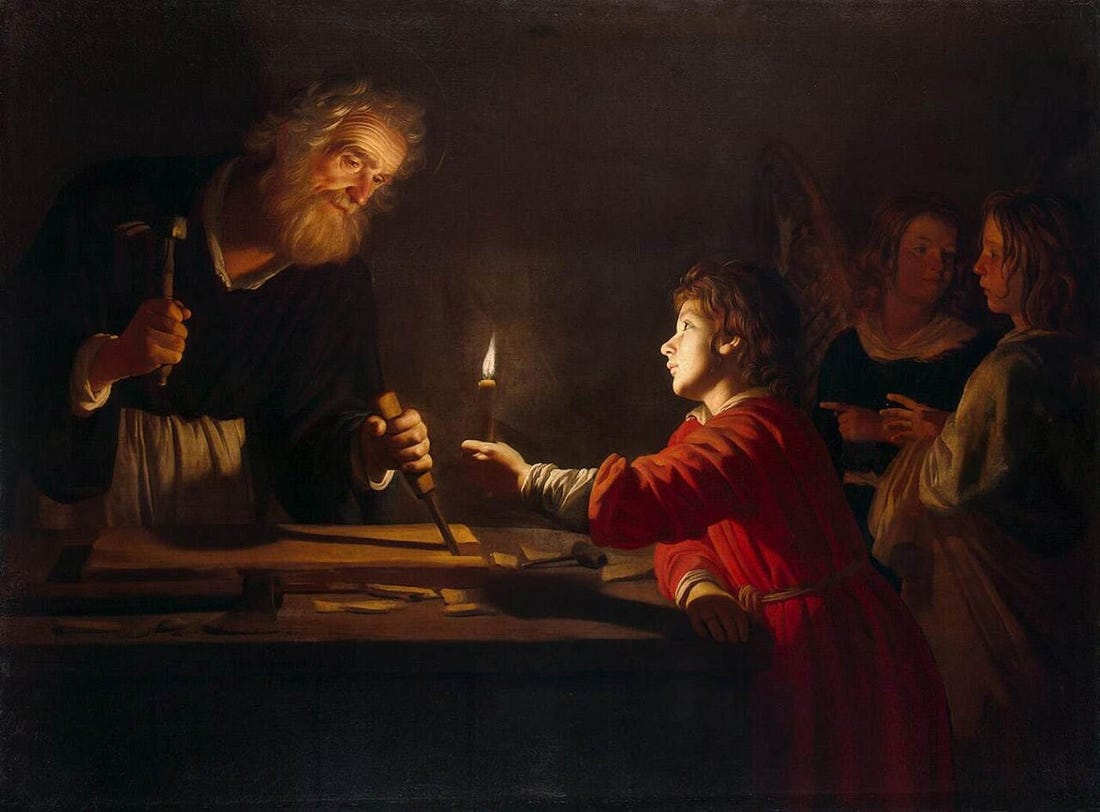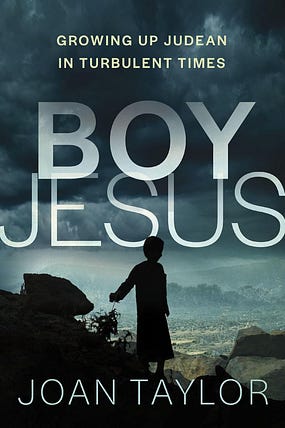 |
By Joan Taylor
|
Aug 19, 2025
|
In the Gospels, Jesus is defined as a tektōn (Mark 6:3), and ‘son of a tektōn’ (Matt. 13:55), which literally means a ‘constructor’, though ‘carpenter’ is the common translation. This was Joseph’s profession, and Jesus as Joseph’s son would have been trained in it, learning the skills of his father. While a tektōn’s work mainly involved wood, it could also involve other materials, such as stone, though it could be distinguished from the work of a mason (a lithologos) or a stone-cutter (lithoxoos). Early Christian writings provide some clues about how the term was understood in ancient times. In the Protevangelium of James it is written that Joseph ‘threw aside his skeparnon’ (9:1), a woodworking adze-plane, and later on he ‘came from his buildings’ (13:1), implying he was constructing them. In the Paidika Joseph, being a tektōn, used to make (wooden) ploughs and yokes. He also received a commission to make a wooden bed (13:1). In the Acts of Thomas (1 – 3), a work dating from the mid-fourth century CE, a slave carpenter is sought, and Judas Thomas (here understood as the twin brother of Jesus) states that he has the required skills: ‘In wood I have learned to make ploughs, and yokes, and ox-goads, and oars for ferry-boats, and masts for ships; and in stone, tombstones and monuments, and temples and palaces for kings.’
. . . Being a carpenter situated Jesus and his family in a particular social class, very different from the wealthy elite. This also meant he was quite different from educated scribes and teachers. As Chris Keith has explored, they would have looked down on Jesus as effectively illiterate. In the book of Sirach (38:24–34), written from the perspective of the priestly educated elite, it is affirmed that the wisdom of a scribe requires leisure time, but someone doing manual labor or a tradesman does not have this required time. The author asks: ‘How can he be wise … one who is occupied in labors … so every tektōn and architektōn who labors night and day?’ (38:25, 27). The author of this work admits that such tradesmen ‘trust in their hands and each one is wise in his own work’ (38:31). However, as Sirach states, they are not sought out for their public counsel, nor do they sit high in the public assembly. They are not judges, nor do they understand court decisions. They cannot expound discipline or judgement. They are not city rulers. As James Crossley and Robert Myles note, from the perspective of the elite, ‘someone like Jesus should not be involved in intellectual matters and should know his place as a rural manual worker’.
There is one incident recorded concerning Jesus’ mission that has a bearing on how we see him as a child in Nazareth in terms of his education, knowledge and authority. According to Mark 6:1–6 (//Matt. 13:53–8; cf. Luke 4:16–19), Jesus comes to his patris, his home town, with his disciples. The context suggests this is Nazareth, but it is not actually said; only in Luke’s retelling is it stated that this was ‘Nazareth, where he had been raised’ (Luke 4:16). At any rate, on the Sabbath, he teaches in the synagogue, and ‘many’ people there are said to be ‘astonished’ and ask:
Where did this [man] get these [ideas]? And what’s [with] the wisdom given to him? And how are such wonder-workings he does happening? Isn’t this the carpenter, the son of Mary, and brother of James, Joset, Judas and Simon? And aren’t his sisters here with us?
People in Nazareth are offended. They do not accept him as a prophet.
The town’s residents use the fact that Jesus is a carpenter to question the validity of his interpretation of Scripture. They are by implication noting that interpretation of Scripture is the usual realm of the scribal elite, as presented in Sirach 38, not a carpenter (Mark 6:3), though the members of this scribal elite are apparently not themselves around. Indeed, one would not expect to see them in a rural synagogue in Nazareth. In Mark, Jesus teaches with divine authority (exousia), as a prophet, ‘not as the scribes’ (Mark 1:22), and thus Jesus responds by telling his disciples that ‘a prophet is not without honor except in his own home town (patris), and among his own relatives (sungeneis), and in his own household (oikia)’ (Mark 6:4).
. . . In the Gospel of John, the divide between Jesus and the scribal elite is made explicit: ‘How is it this man has learning, when he hasn’t studied?’ (John 7:15). We see here a social stigma, despite Jesus’ heritage as a descendant of David. To be a tradesman, working with his hands for a living, meant he belonged to a class that was well below that of the men who claimed true learning and authority: those who sat on ‘Moses’ seat’ (Matt. 23:1–3).
Education
Despite his status as a manual worker, Jesus was not without any education. The synagogue context in Nazareth, as described in Mark, implies that teaching is what was expected in this space (Mark 6:2). It was just not the kind of teaching that Jesus presented. Sirach was written c.200 BCE, but, in the centuries that followed, the institution of the synagogue grew in both Judaea and the Jewish Diaspora, and part of the synagogue’s raison d’être appears to have been education. For example, Philo of Alexandria set great store on synagogues being ‘schools’ (didaskaleia) whereby all Israel would be taught the Mosaic law. After all, Moses commanded Israel to teach the precepts of God to children ‘so that you and your children may live long in the land that Yahweh swore to your ancestors’ (Deut. 11:16–21; and see 6:1–3). This was a particular responsibility placed on fathers. Josephus writes of how Moses’ form of education was by means of precepts and praxis, words and actions, the latter beginning with eating kosher food and resting on the Sabbath. This was a pattern established early in life, along with regular assemblies (in the synagogue) to listen to the law and gain a full knowledge of it, so that people could repeat the laws by heart, having them ‘inscribed on [their] souls’: (male) children had to learn to follow the law so as not to use ignorance as an excuse for transgression, and to know the actions of their ancestors and imitate them (Apion 2:171–204). This method of education therefore entailed memorization of Scripture. Synagogues were comprised of a main hall for the assembly of the community over the course of the Sabbath day (men, women and children) but also other rooms, including a Beth ha-Sepher, the ‘book house’, where learning letters and reading would take place, and also the Beth Midrash, the ‘study house’, where there was Torah study for men and older boys. Such rooms within synagogue complexes, such as in Magdala and Gamala, can be distinguished in the archaeological remains.
Therefore, it seems likely that training in Scripture within the synagogue was an essential part of growing up as a Jewish boy, though memorization cannot be considered advanced literacy as such, and in rural synagogues there may have been little time or encouragement for much Torah study. At any rate, from around the age of 13 Jesus would have been supposed to know the basics of the law of Moses; at this point any vows he made would be considered valid (m.Nid. 5:6; m.’Abot 5:21).
— Joan Taylor is Professor Emerita of Christian Origins and Second Temple Judaism, King's College London, and Honorary Professor in Biblical and Early Christian Studies, Australian Catholic University, Melbourne. Her recent books include The Essenes, the Scrolls and the Dead Sea (OUP, 2012), What Did Jesus Look Like? (Bloomsbury, 2018), and (with Helen Bond) Women Remembered: Jesus’ Female Disciples (Hodder, 2022).
image: Childhood of Christ
---
Excerpted from Boy Jesus: Growing Up Judean in Turbulent Times by Joan Taylor (Zondervan Academic, 2025). Used by permission.
As a boy, Jesus was a refugee, an outsider, an immigrant in Galilee in which he grew up, and affected by horrific atrocities by the occupying Roman overlords.
All this and more is explored in this scholarly but highly accessible investigation into the world of Jesus, ranging from his birth to his coming of age and beyond. Joan Taylor, a world authority on the history and literature of the first century CE, draws both on the latest archaeological findings and on the historical clues to be found within ancient texts of the period. The result is a book that brings the story of Jesus' childhood clearly and vividly to life as never before, while also pointing to the many ways in which Jesus' experiences as a child are likely to have influenced his life, attitudes, and actions as an adult.
“Boy Jesus is perhaps the most thorough, accessible, and compelling contextual treatment of Jesus’s life to date. Everything from his tribal identity to his family and trade are given close examination. This book will be prized by anyone studying the historical Jesus or the Gospels, scholar or pastor alike.”
— Gary M. Burge, Adjunct Professor of New Testament, Calvin Theological Seminary, Grand Rapids, Michigan
“A leading archaeologist and expert on Second Temple Judea offers here a nuanced, wide-ranging, and groundbreaking exploration of the earliest stories of Jesus’s infancy and childhood. . . . Everyone will learn from it, and those who disagree on points will necessarily find the study fascinating and worthy of engagement, while finding much worthy of consideration.”
— Craig S. Keener, F. M. and Ada Thompson Professor of Biblical Studies, Asbury Theological Seminary, Wilmore, Kentucky
Find Boy Jesus at Zondervan, Amazon, Barnes & Noble, and Christianbook.com.
*sponsored











